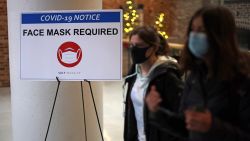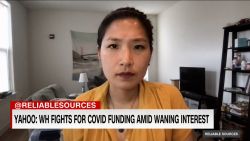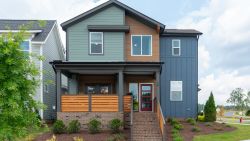At the end of May, Ilana Freund landed a deal on an apartment in New York City where she will be attending graduate school. She and her roommate signed a lease on a two-bedroom apartment in the West Village for $4,995 a month. It was a significant discount: Similar apartments in the building were going for around $5,300 before the pandemic took hold, according to the listing agent.
The two roommates were also given one month’s rent free and did not have to pay a broker fee, which typically would have cost them 12% to 15% of the annual rent.
“It has been crazy,” Freund said, “but we definitely got a very good deal.”
“Pandemic pricing,” as some agents call it, has arrived across the country as landlords react to the economic fallout of the coronavirus pandemic. With many people either losing their jobs or working from home due to the shutdowns, many tenants have chosen to leave their apartments behind in major US cities.
And that has pushed rental prices lower in many places across the US. In May, according to apartment listing platform Zumper, the top four most expensive cities – San Francisco, New York, Boston and San Jose – all saw rents on median one-bedroom apartments decline from a year ago.
In San Francisco, the median rent for one-bedrooms is down 9% from last year to $3,360 and two-bedrooms are down 6% to $4,420, according to Zumper.
“I’m seeing rents are down 10% to 20%, with higher-end and luxury units taking the biggest hits,” said Dave Chesnosky, an agent with Compass in San Francisco. “But these drops are dependent on the location and uniqueness of a unit.”
Rents are dropping at the high end of the market first as people who are “renters by choice” bail on their apartments, said Jeff Adler, vice president and general manager at Yardi Matrix, which tracks the leasing industry.
“Younger, single professionals who weren’t attached to the city they were living in said, ‘If everything is shut down, why should I stay here? I’ll go back home.’ Or they doubled up with someone else,” he said.
As more apartments become available, owners have been forced to reduce their rent to increase interest, he said.
This has a cascading effect throughout the market as people in the price bracket below find these deals – perhaps a better apartment for the same price or even less – and vacate their own apartments.
“If you have a job and a stable income, now is not a bad time to look around and see if you can improve your circumstances,” said Adler.
Steeper drops at higher end
In Manhattan, the rents on the highest priced apartments are falling fastest. The median rent for a luxury apartment in May was $7,825 a month, a 10% drop from April, according to a report from brokerage firm Douglas Elliman and appraiser Miller Samuel. The median rent for all Manhattan apartments in May was $3,546, down 3% from April.
More from Success
“No one is surprised the prices have come down slightly,” said Hal Gavzie, executive director of leasing at Douglas Elliman in New York City. “Landlords are doing whatever they can to get vacant apartments filled.”
New leases typically spike in May, but last month they were down 62% from the year before, according to the Douglas Elliman report. This is partly due to the shutdown, which prevents rental agents from showing apartments in New York City, said Gavzie.
But, he said, more apartments are also available because people just up and left their leases. While many left when the pandemic shut down the city, others left later when the protests over the killing of George Floyd began, Gavzie said.
Gavzie said that presents a rare opportunity for those staying in the city.
“Right now is probably when you’ll get the best deals you’re going to find,” said Gavzie. “Once we are able to show apartments in New York, the inventory will diminish and there will be more competition.”
During their apartment search, Freund said she and her roommate saw incentives on other rentals as well and every listing they saw waived the broker fee. Plus, the lower rents allowed Freund and her roommate to expand their wish list.
“We wanted to at least have laundry in the building,” she said. “As prices were decreasing, we realized we could get laundry in the unit. That was such a win.”
New wish list: home office, outdoor space
In New York, realistic landlords who provide flexible lease starts, pay the broker’s fee or offer incentives are the ones finding renters, said Kristina Paces, an agent at Douglas Elliman.
Paces, who leases buildings in lower Manhattan, said landlords she works with have increased their incentives from one month of free rent, to two months with a 12-month lease. In May, 42% of new leases had an owner-paid incentive, up from 35% in April, according to the Douglas Elliman/Miller Samuel report.
“No one is walking in saying, ‘Great, I’d love to pay full price,’ in this Covid-19 environment,” she said.
What people are willing to pay more for in a rental apartment building is changing as well, said Paces.
All those buildings with fancy amenities were competing with each other to offer gyms, pools and movie lounges. Not only are the perks not enticing anyone right now, many aren’t even open or usable.
Most in demand now: home-office space, an in-unit washer and dryer and outdoor space, said Paces. “People’s offices are closed until January and they are taking that into consideration when looking for apartments.”
After being indoors for so many months, outdoor space has become an especially attractive luxury. “It is a premium. Those apartments are going first,” she said. “In a normal market, you think, I might use that a bit, but now you know you’ll use it a lot.”


























